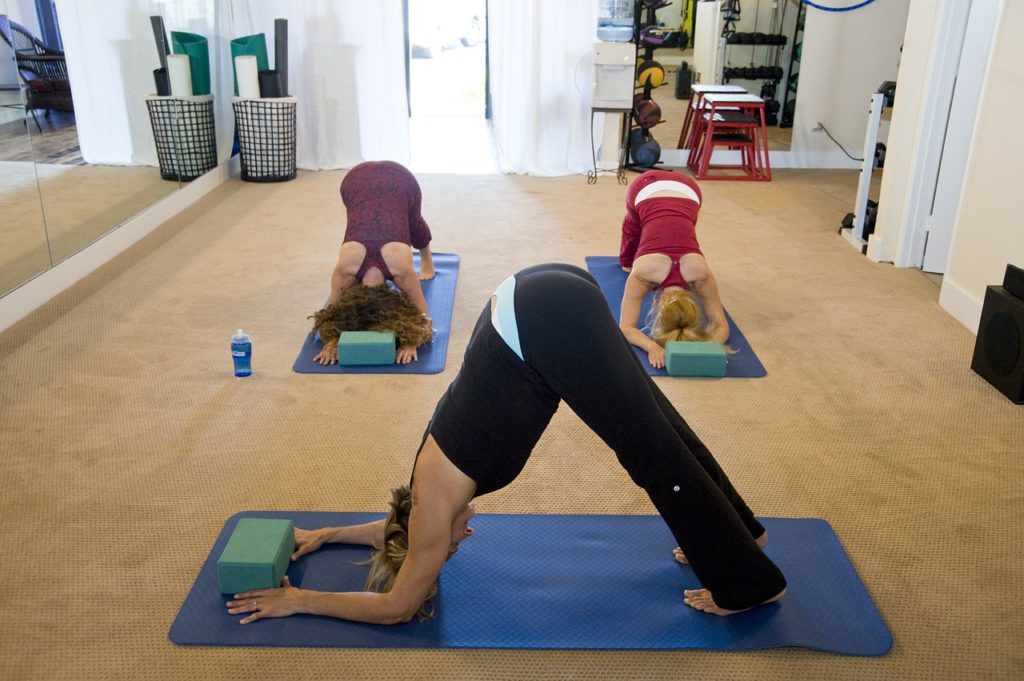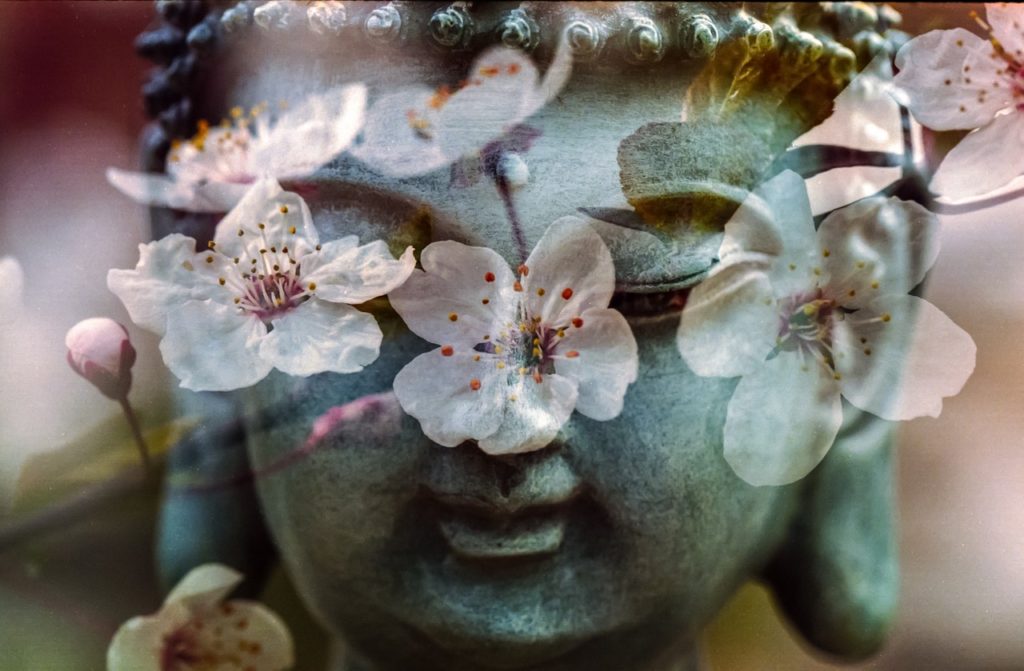If you love the physical practice of yoga, you may not be aware that the poses are just one limb (asana) of the eight limbs of yoga.
Don’t worry. You’re not alone. And honestly, if the poses are making your day, perhaps you’re not especially interested in the other aspects of the practice. We get it.
The poses are, however, just a part of a much deeper spiritual practice that focuses on subduing the ego and relinquishing certain ideas we hold dear. And that can feel scary.
Yet for those willing to explore these teachings, it can be AMAZINGLY liberating. And they add another dimension to the mere physical practice as well.
The Eight Limbs of Yoga in the Yoga Sutras

The Yoga Sutras of Patanjali was compiled approximately 2,000 years ago. Yet it continues to this day to be one of the main sources of the yoga teachings. It is a text that describes the goal and practice of yoga.
Although it does this in a clear and succinct way, embracing yoga’s philosophy can be challenging. This is why it’s called a practice. And a lifelong one, at that. It’s a journey that’s well worth taking though.
So we’ll take a simplified look at the “yoga tree”, as it were, by exploring the eight limbs of that upward climb.
1. Yamas
The first of the foundational limbs is known as the yamas. The yamas are ethical precepts that focus on our integrity, personal behavior and the ways we conduct ourselves. There are five yamas and they are as follows:
ahimsa: non-violence
satya: truthfulness
asteya: non-stealing
brahmacharya: restraint
aparigraha: non-grasping or non-attachment
These universal practices essentially follow the Golden Rule – do unto others as you’d have done unto you. In our previous blogs, we covered each of these yamas in detail.
After the yamas, Patanjali added an additional tool known as pratipaksha bhavana. It asks us to reflect on how much of our thinking is negative and the ways this can lead to suffering.
2. Niyamas
Niyama turns to self-discipline and spiritual observances. This does’t necessarily mean you need to go to a church, synagogue, or mosque. Taking regular walks, starting a meditation practice, practicing mindful eating can all be examples of niyamas which include:
saucha: cleanliness
santosa: contentment
tapas: enthusiasm
svadhyaya: self-study
isvara pranidhana: surrender to higher power or something bigger
Just as we covered the yamas in detail in previous posts, you can also find full explanations of each of the niyamas.
3. Asana
This is where the physical component comes into play. Most of us know asana as just another word for poses. But in the Yoga Sutras, it goes deeper than that.

Asana actually means “seat.”
Yoga asks us to focus the mind and work on stability and stillness in postures. To find that seat. There is a steady and meditative quality to it that does not emphasize flexiblility or strength. In each pose, we’re seeking the place where we can settle into the mind by focusing on energy, sensations, and breath. Which brings us to the fourth limb…
4. Pranayama
The first four limbs of Patanjali’s eight limbs concentrate on observing our personalities and behavior (yama and niyama), gaining mastery over the body (asana), and developing an energetic awareness through breath work. This last step is the essence of pranayama.
This limb consists of techniques or breathing exercises that help us recognize the connection between the breath, the mind, and the emotions. Breath is integral in the physical practice of yoga as we synchronize movement with respiration. But pranayama can also be performed independent of asana.
Continually working within the parameters of these first four limbs ultimately prepares us for the second four limbs which deal with the senses, the mind, and reaching higher consciousness.
5. Pratyahara
Yoga ultimately works to cease the fluctuations of the mind. These fluctuations are created by thoughts which are, in turn, born of what we get from our senses. Pratyahara is a withdrawal or detachment from the senses. It is a turning of our awareness inward to help calm and prepare the mind for the next couple of limbs.
6. Dharana
Dharana means concentration. But it’s of the heavy-duty variety.
At the sixth limb, the assumption is that you’ve removed yourself from outside distractions by detaching from your senses and are now ready to bring one-pointed focus on a single mental object. This could be an image, a sound, or even an energetic point in the body.

Once this is established, it’s time to move to the seventh limb.
7. Dhyana
The seventh limb, in a nutshell, is meditation. It is an application of everything you’ve learned and attained in the first six limbs to arrive at a place where you’re completely absorbed in the focus of your meditation.
There is no active component to dhyana. It’s a completely inward shift from “human doing” to “human being.”
8. Samadhi
Samadhi means enlightenment, but this limb is probably one of the most misunderstood.
Enlightenment doesn’t imply pure happiness and joy at all times. It is, more accurately, the point of reaching self-realization. It’s the ability to experience moments where you are not disturbed by the mind or conditioned by likes, dislikes or habits. It’s the suspension of judgment or attachment. THAT is the bliss.
And it is generally not a permanent state. For the vast majority of us, it is fleeting at best. Even so, these moments are completely freeing.
Interested in Exploring the Eight Limbs of Yoga?
At the end of the day – or, at least at the end of the practice – the eight limbs of yoga ask us to take a serious look at who we really are. It’s a big order, to be sure. But one that has a huge return on investment.
So if you’d like to start incorporating yoga and meditation into your life, contact us today. We can bring these practices right to your business, organization, or school.
And no pressure. Even if you decide you just want to stick with the postures, you’ll still benefit from the practice!



